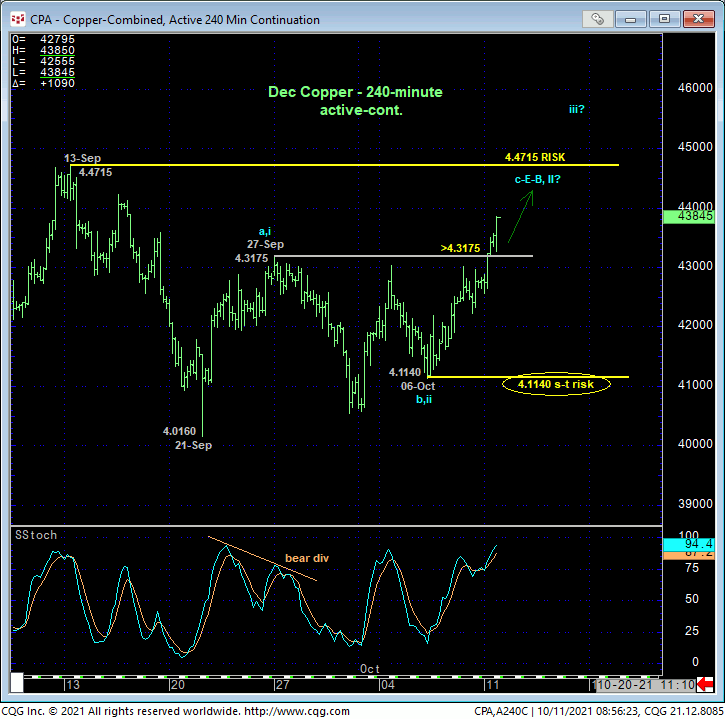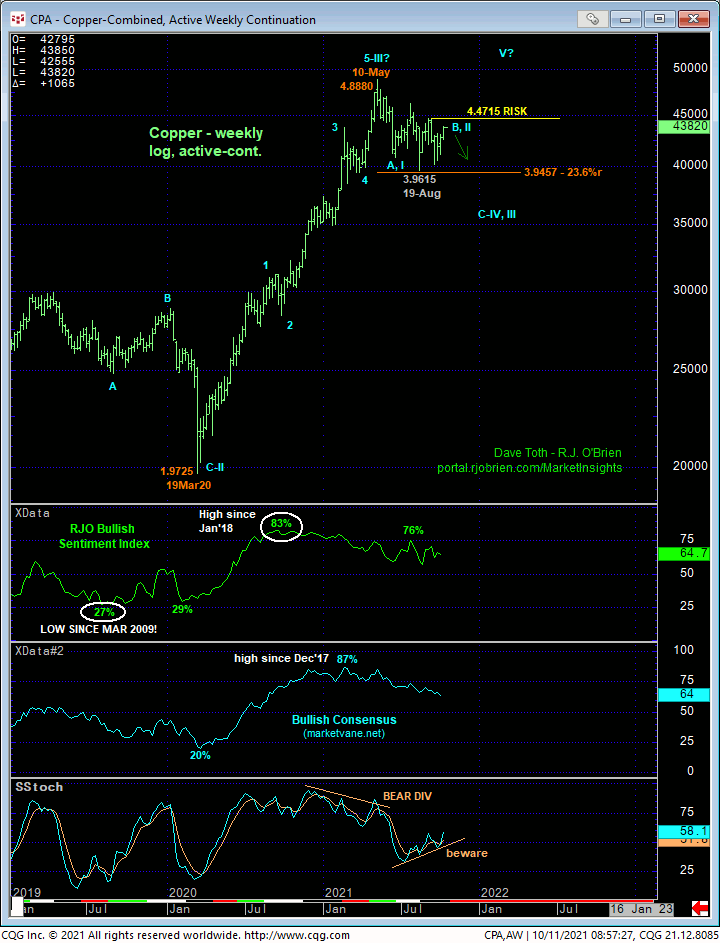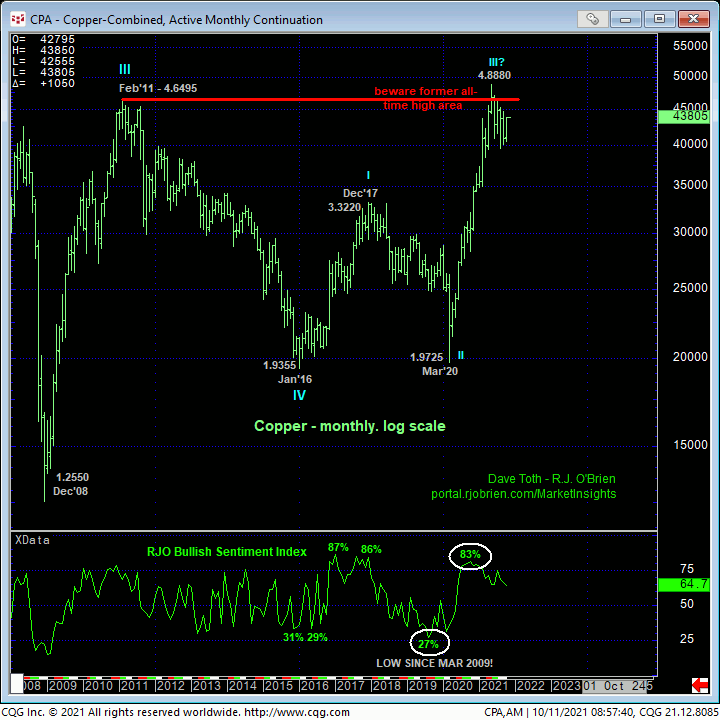
Since mid-Jun’s bearish divergence in weekly momentum and with Jul-Aug’s resumption of May-Jun’s initial counter-trend slide, we’ve discussed the technical elements in place that are typical of major peak/correction/reversal environments. Since mid-Aug’s resumed plunge however, the merely lateral, consolidation chop shown in the daily close-only chart above is hard to ignore as developing evidence consistent with a major correction from 11-May’s 4.7620 that, if correct, would warn of a resumption of 2020 – 2021’s secular bull trend.
Commensurately larger-degree strength above 10-Sep’s 4.4520 corrective high close (4.4715 on an intra-day basis) remains required to render May-Aug’s decline a 3-wave and thus corrective affair that would then tilt long-term directional scales higher. Overnight’s punch above 27-Sep’s 4.3175 high and our short-term risk parameter detailed in the 240-min chart below is perhaps a precursor to such larger-degree strength above 4.4715, leaving last week’s 4.1140 low in its wake as the latest smaller-degree corrective low the market now needs to relapse below to threaten a broader bullish count and resurrect a broader peak/correction/reversal count. In this regard, this 4.1140 level serves as our new short-term risk parameter from which traders can objectively base non-bearish decisions like short-covers and cautious bullish punts.
The lateral nature of the past FOUR MONTHS’ price action, if not all of the action from May’s 4.7620 high is frustrating and challenging and also not uncommon across every market. Such environments present horrible risk/reward conditions due to aimless whipsaw risk typical of them. Such non-trending markets occur about 2/3rds of the time across all markets and time scales are are the beasts trend-followers have had to deal with since markets began. And under such circumstances, when the risk/reward metrics of initiating directional exposure are so poor, it has been our recommendation to move to a more conservative approach to risk assumption, if not avoid the market altogether, and try to identify tighter but objective risk parameters around which to base cautious directional biases and exposure. Per such and as labeled in the 240-min chart below, we believe the closest pertinent short- and long-term flexion points are 4.4715 and 4.1140.


From a much longer-term perspective, the monthly log chart below shows the market’s engagement of 2011’s previous all-time high around 4.65 where it’s not hard to question the risk/reward metrics of a longer-term bullish policy “up here”. This said and on the heels of Mar’20 – May’21’s massive 1.9725 – 4.8880 rally, the fact that this market has only been able to retrace a Fibonacci minimum 23.6% of this rally amidst thus far lateral price action is not hard to construe as merely corrective/consolidative with the ongoing secular bull market that may be gearing up to resume. If this is the case, then the bull needs to PERFORM LIKE ONE with sustained, trendy, impulsive behavior above highs like 4.4715. A relapse below 4.1140 is of too minor a scale to negate a longer-term bullish count, but it would at least maintain and reinforce a broader peak/correction/reversal threat.
In sum, we believe a longer-term bullish count received reinforcing evidence as a result of today’s recovery above 4.3175. Continued strength above 4.4715 is required to reinforce this call while a failure below 4.1140 is required to negate it. Again, the market’s position in the middle of the multi-month range presents poor risk/reward metrics for initiating directional exposure, but we believe a cautious (via option strategies) bullish policy is the best course at this juncture with a failure below 4.1140 required to negate this call. If this risk is too great for one’s personal risk profile, a neutral/sideline policy is advised.

